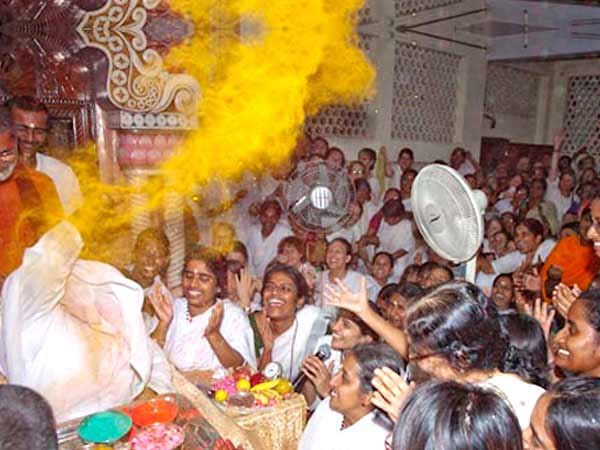Like other states in India, Holi celebrations
are full of zeal in Maharashtra also. Explore more about the
celebrations of Holi in Maharashtra.
Holi in Maharashtra

|
Holi is a colorful festival celebrated during the
spring season (March), in India. It is the time, when people let their
hair down and enjoy the time with fun and fervor. As the festival falls
on the transition stage from chilly winters to summers, it brings in a
degree of warmth and fills the air with festivity. Few days prior to the
festival, people indulge in the merrymaking. They shop for new clothes
and furbishes for the festival. Little children take immense pleasure in
moving around the street and splashing water on the passers-by, using
pichkaris.
The celebrations on Holi are not bound to the boundaries of North
India. The festival is celebrated with great vigor in western parts of
the country as well. The people of Maharashtra observe it in their
unique and grand manner. To begin with, Holi is known as Rangapanchmi
here. Unlike people in the north, the festival is celebrated five days
after Phalgun Poornima. On this day, natives play with colors and drench
themselves in the spirit of festivity. Bonfires, known as Holika, are
burnt to symbolize the victory of good over evil. Read on to know more
about Holi festival in Maharashtra.
Holi Festival In Maharashtra
During Holi, people in Maharashtra rejoice by treating themselves with
mouth watering sweets and delicacies. 'Puran Poli' is the famous sweet
dish, prepared on the occasion of Holi. In addition to this, people also
drink sugarcane juice and feed children with watermelons. Holi is also
popular amongst the fisher folk of the region. They celebrate the
festival elaborately, by singing and dancing. Not to forget, the main
attraction of the festival is the pot breaking sport. The sport has
roots in the ancient Era of Lord Krishna.
It is celebrated to commemorate the innocence of Krishna as a child,
who used to steal butter from the nearby houses in his village. The
revelry of the festival reaches at its peak, when it comes to breaking
the pot. Trained groups of youngsters form huge pyramids to break the
pot, hung high on the streets. Restricting their access is the constant
splashing of water on them, by the women folk. During the festival of
Holi, you can see every street filled with people, who participate in
the pot breaking sport, with much enthusiasm.
Significance
Historical significance is linked with the celebration of Holi in
Maharashtra. According to the historical records, the festival was
celebrated with great fanfare during the Maratha regime. It was on the
festival that five-year-old Jijabhai, daughter of Lakhooji Jadhav,
playfully splashed colored water and threw gulal on young Shahaji, son
of Malajirao Bhowale. This gestured was considered auspicious and on the
very same day, the engagement of the two children was announced. They
tied the wedding knot soon. Later on, Shivaji, the founder of great
Maratha Empire was born as the son of Jijabhai.




